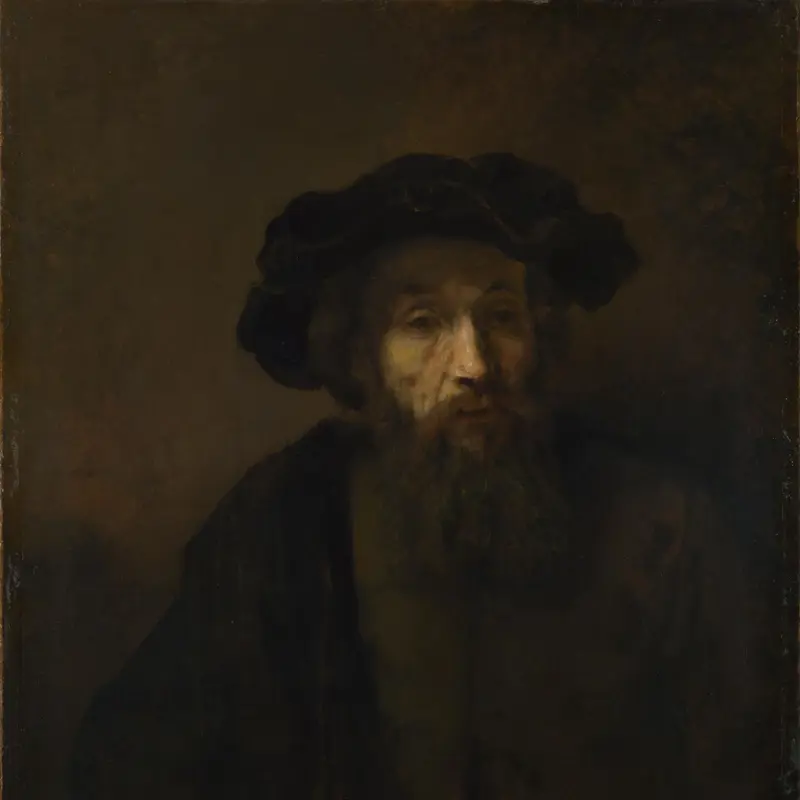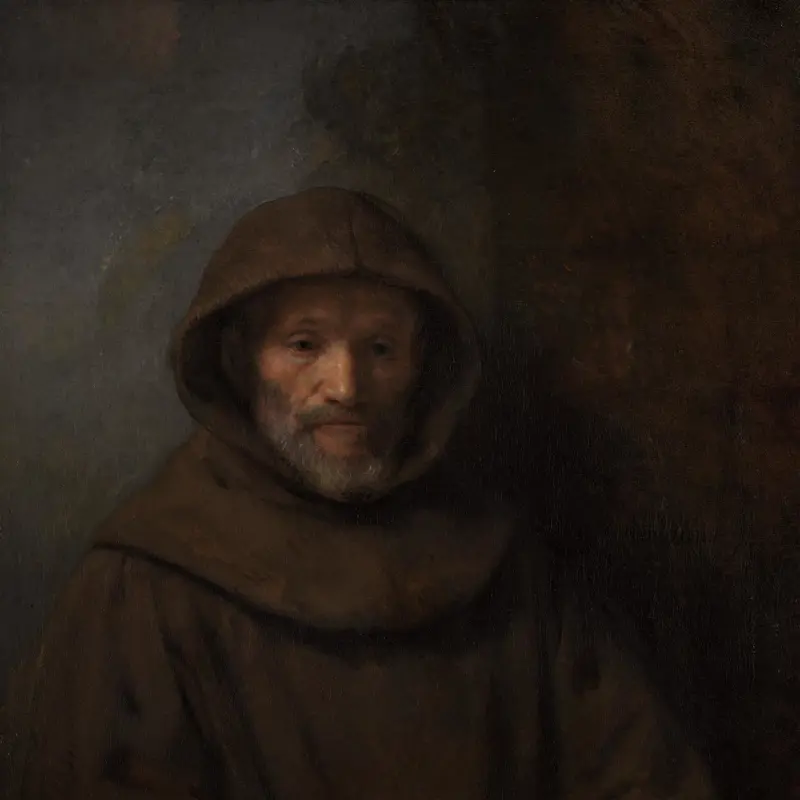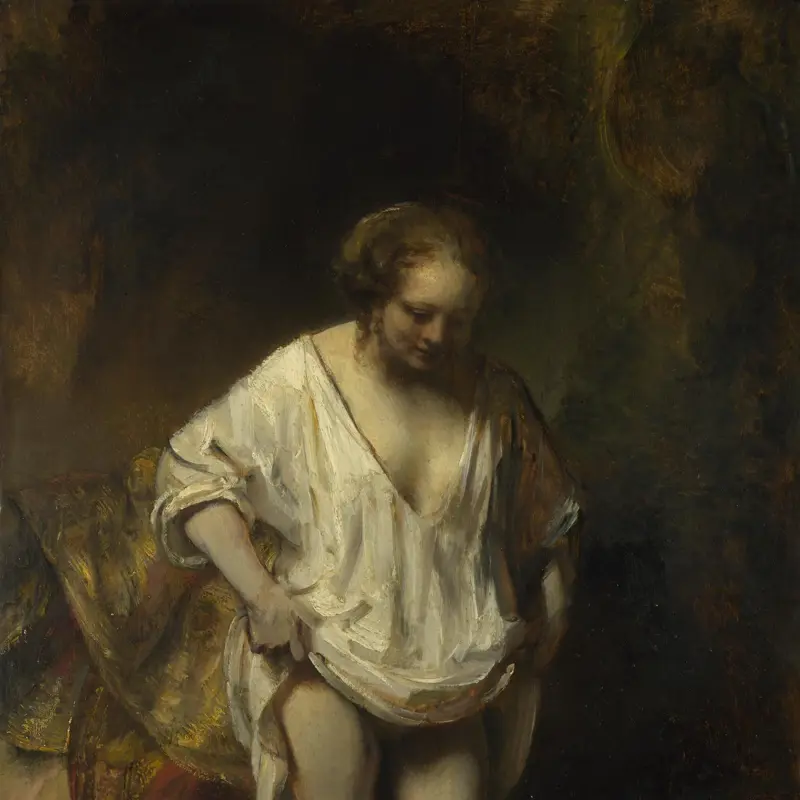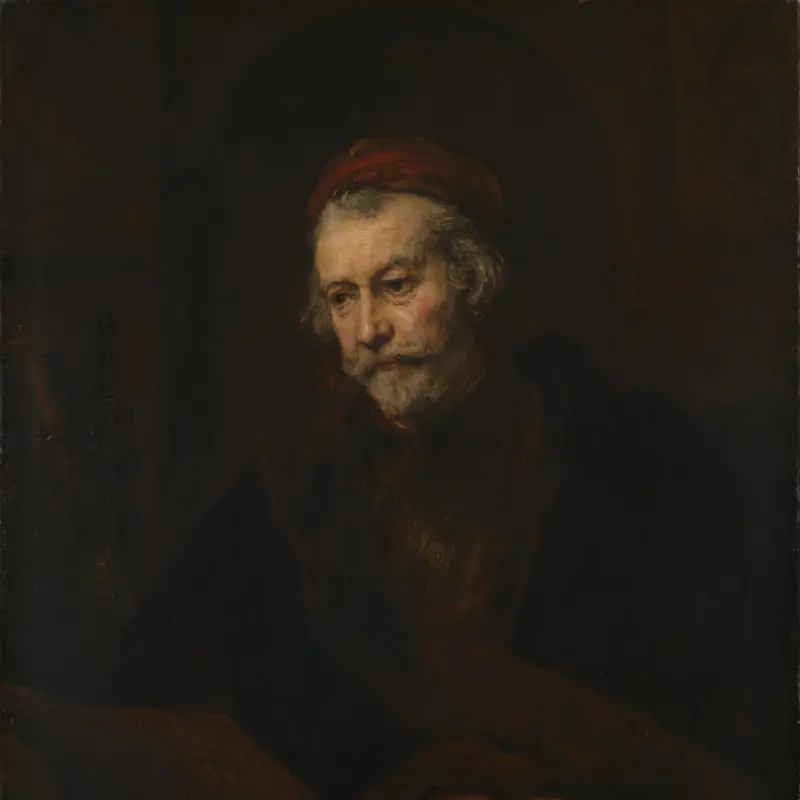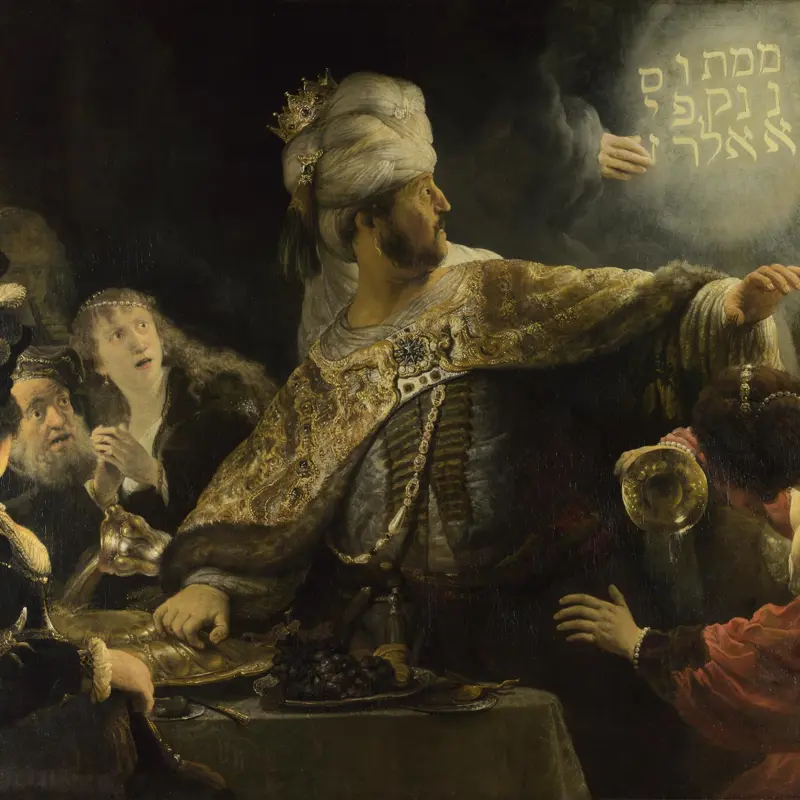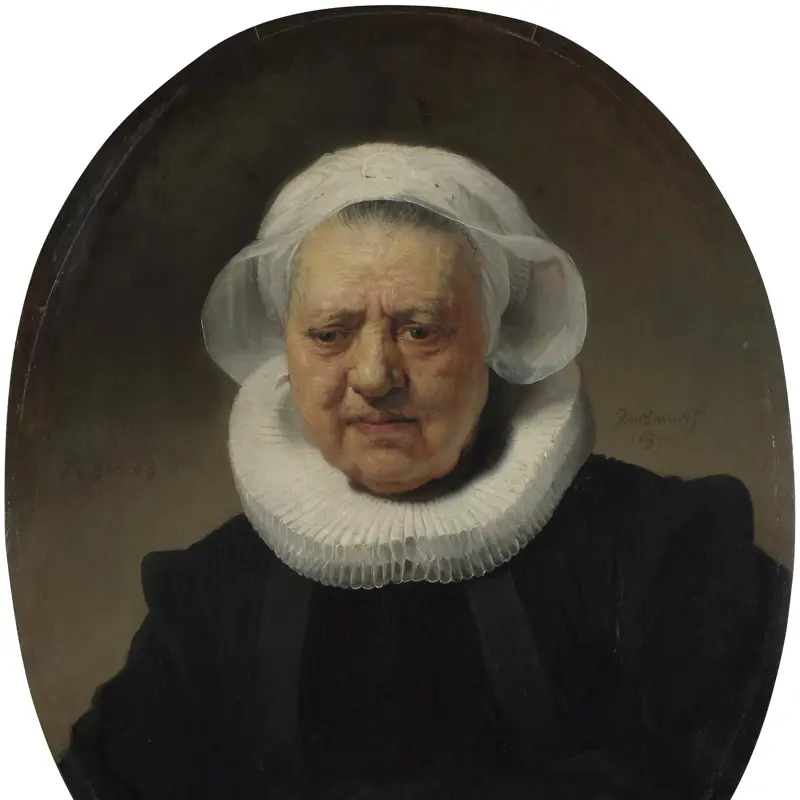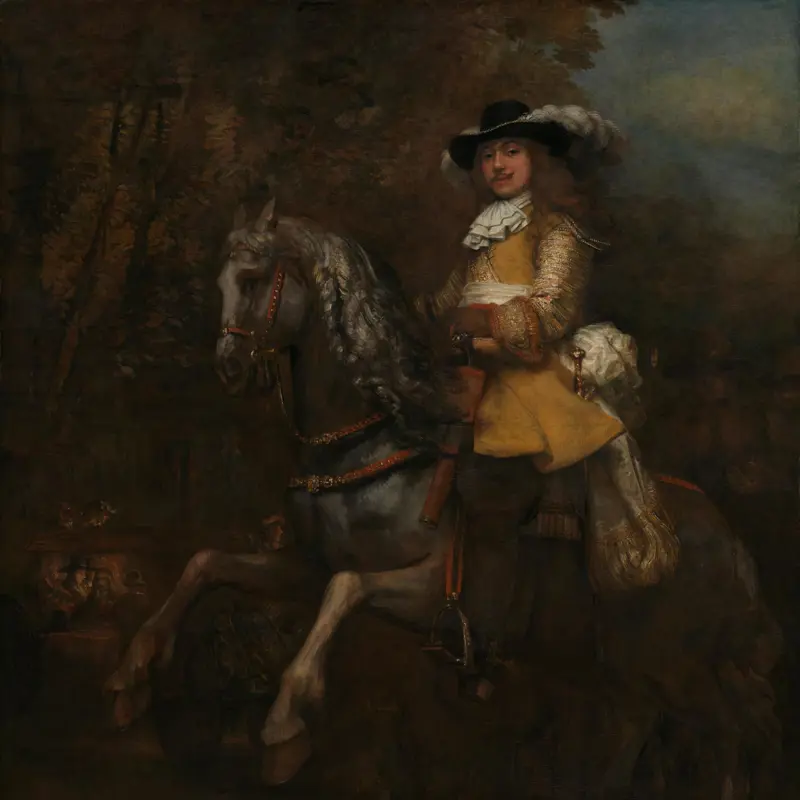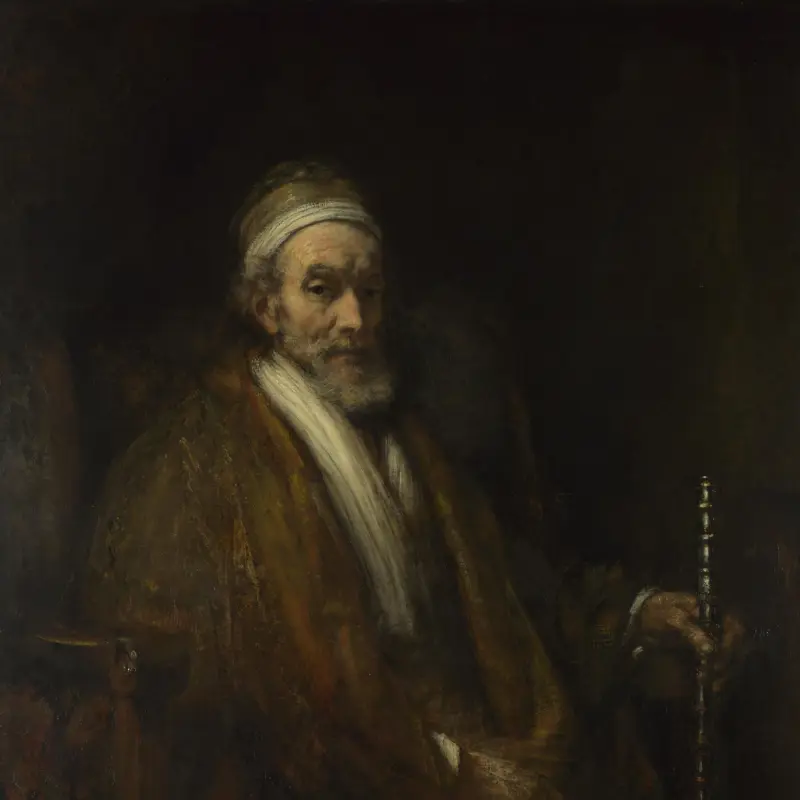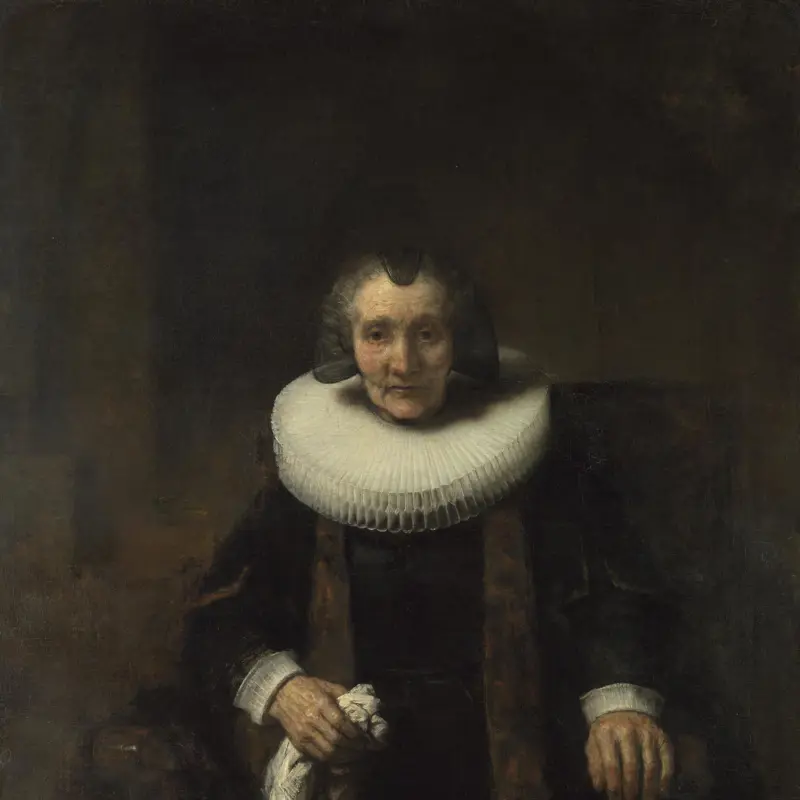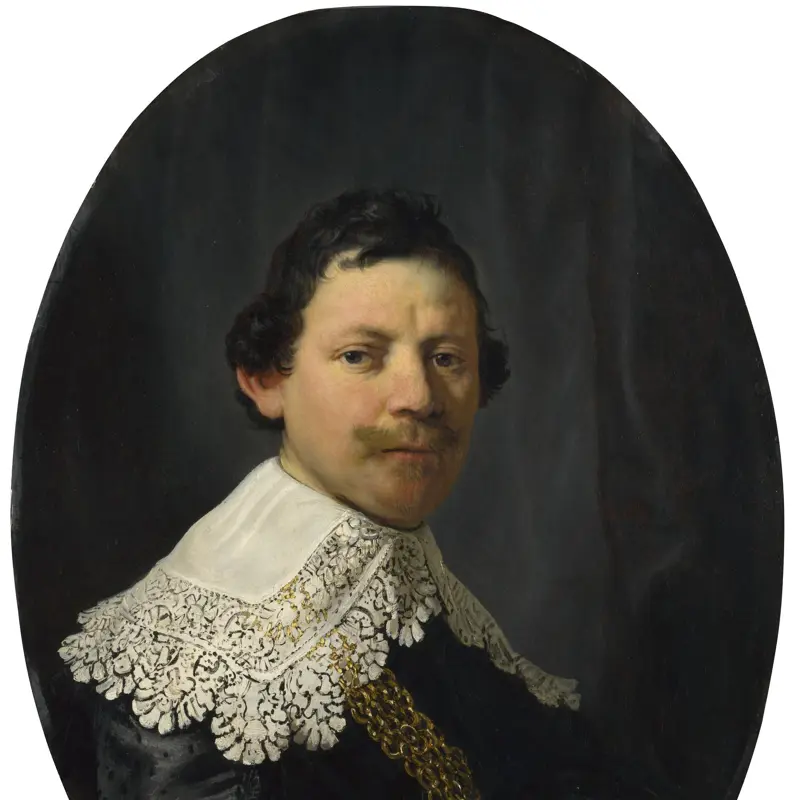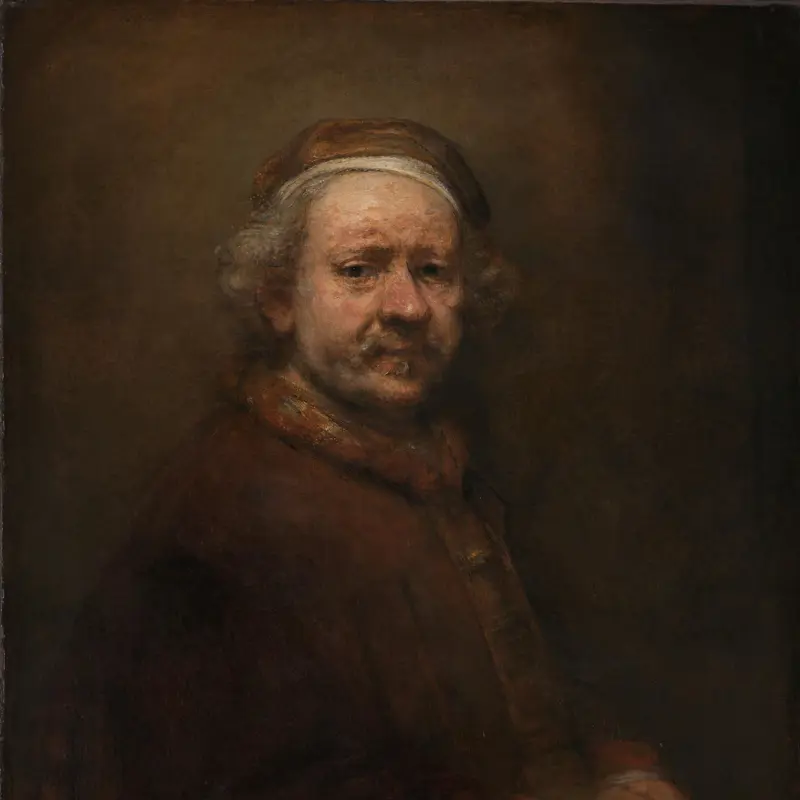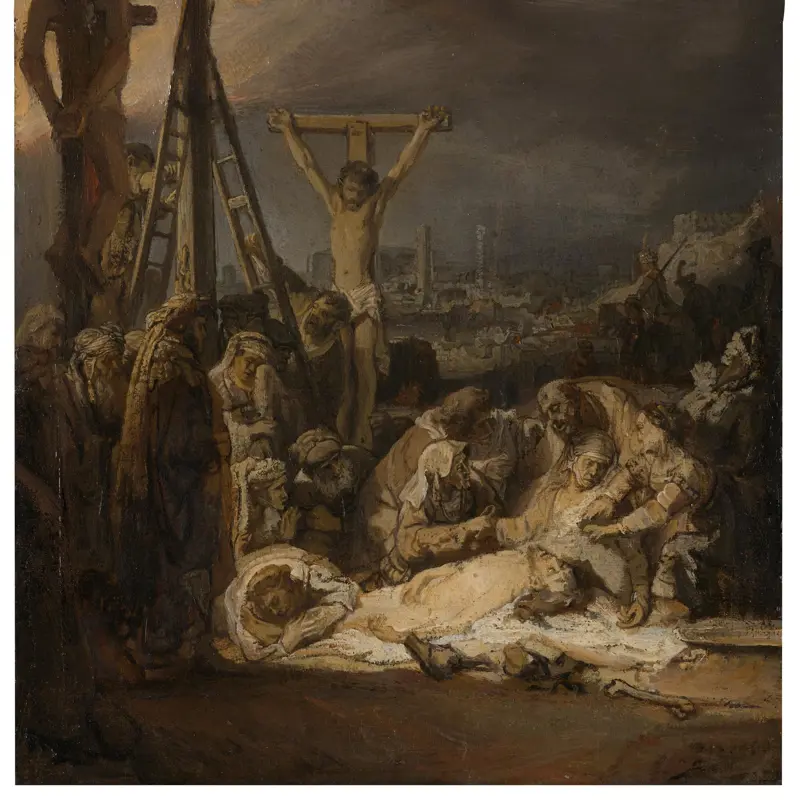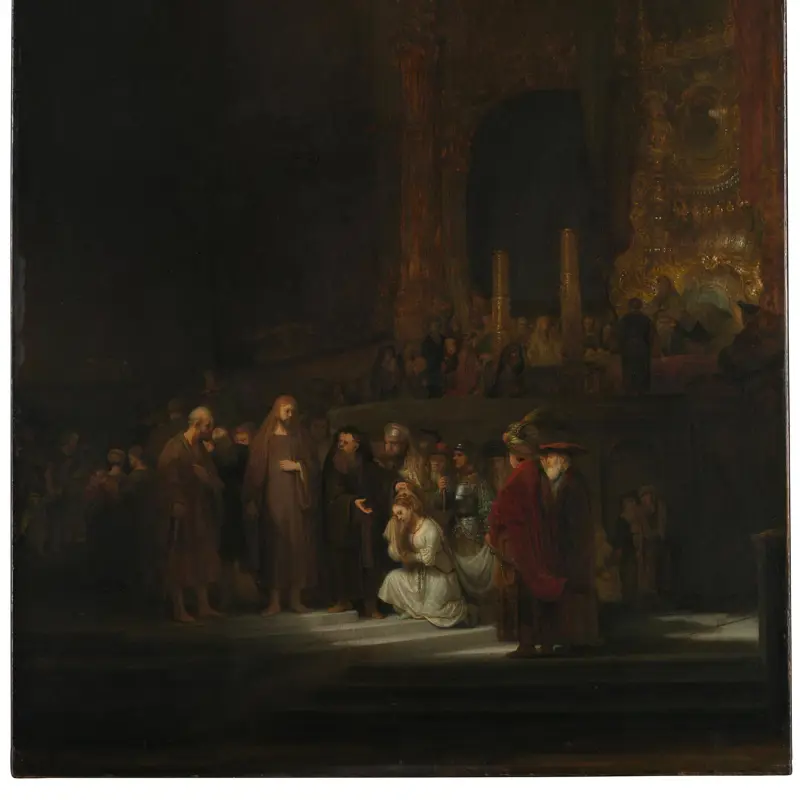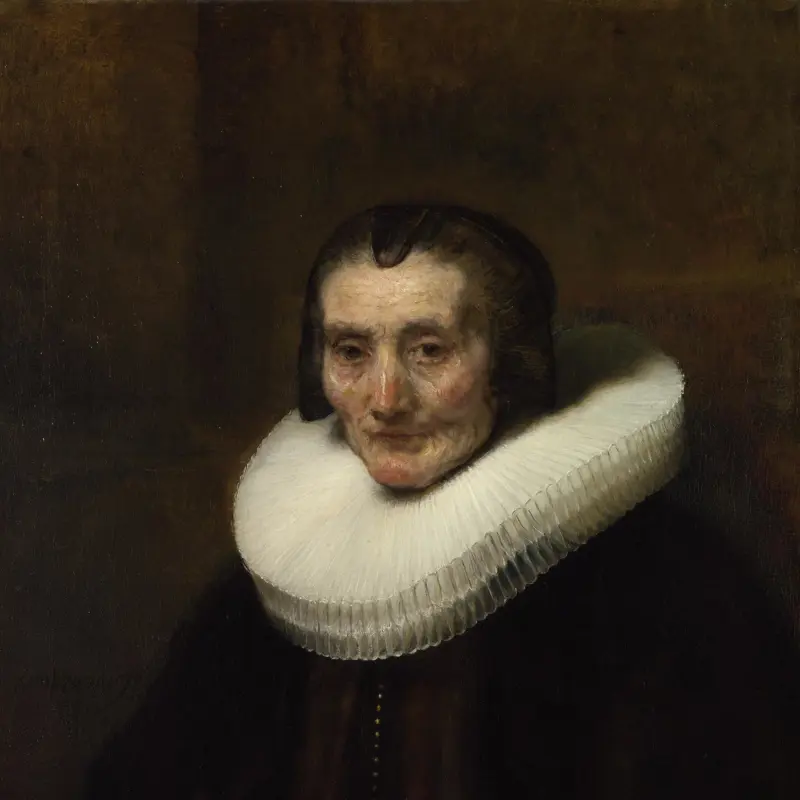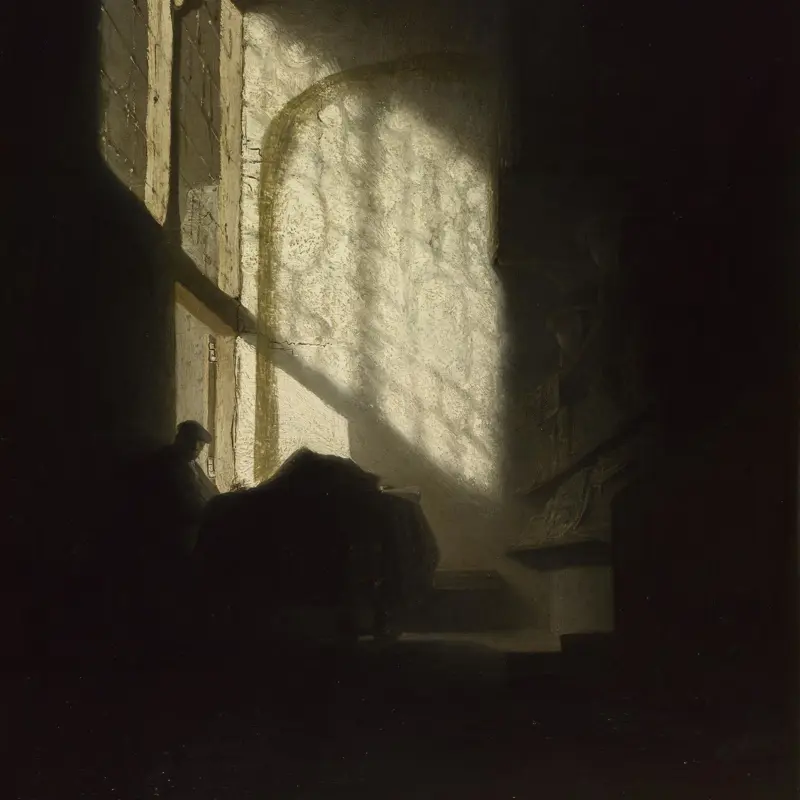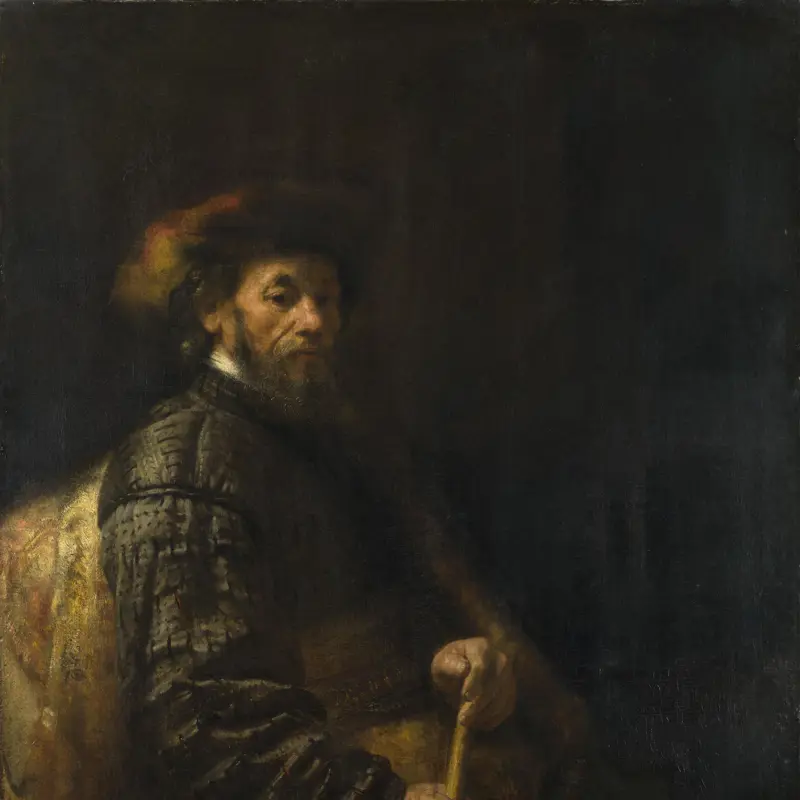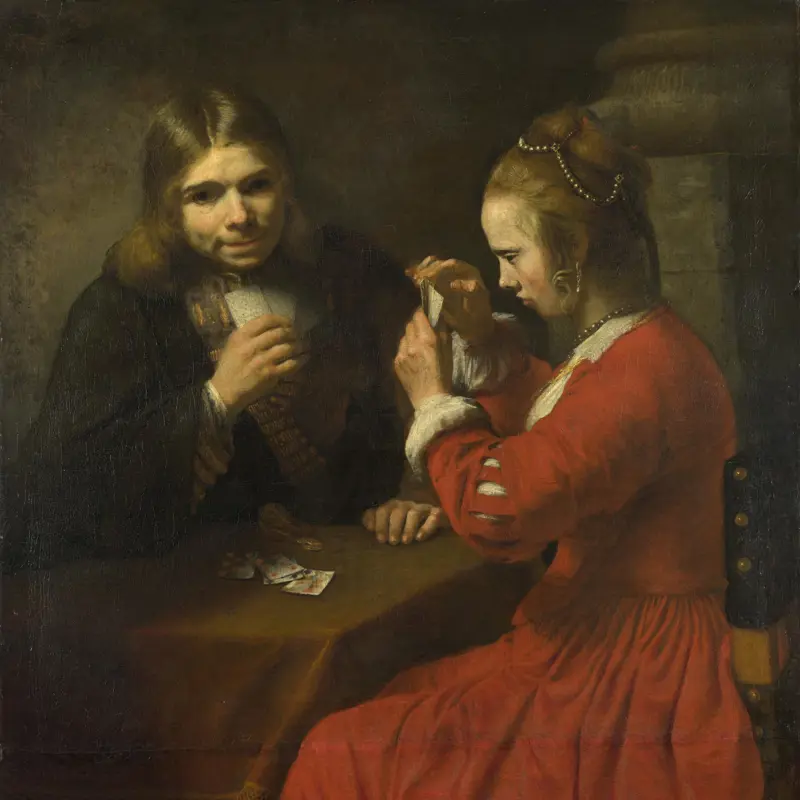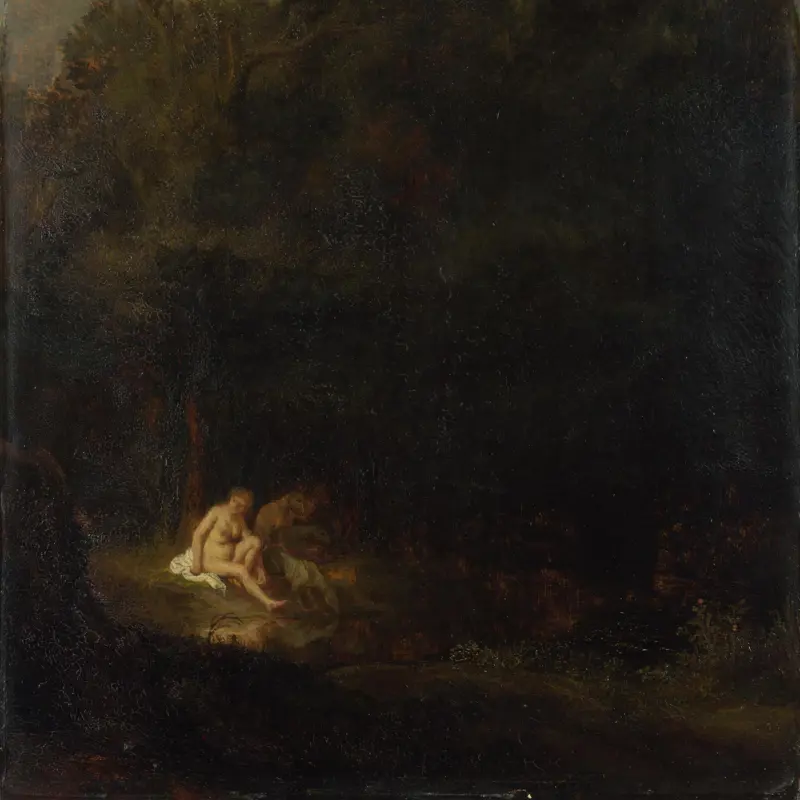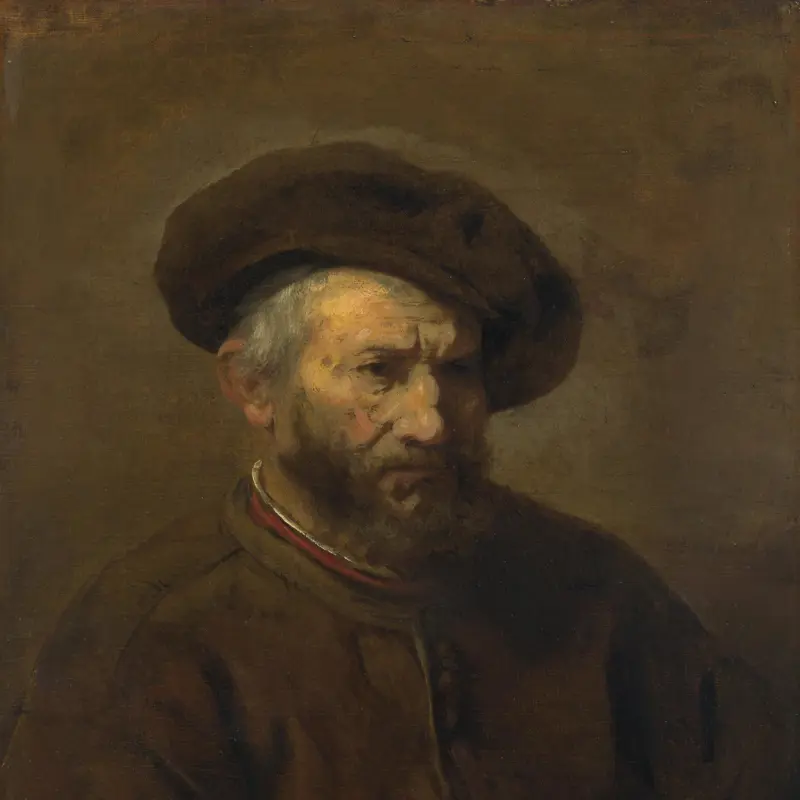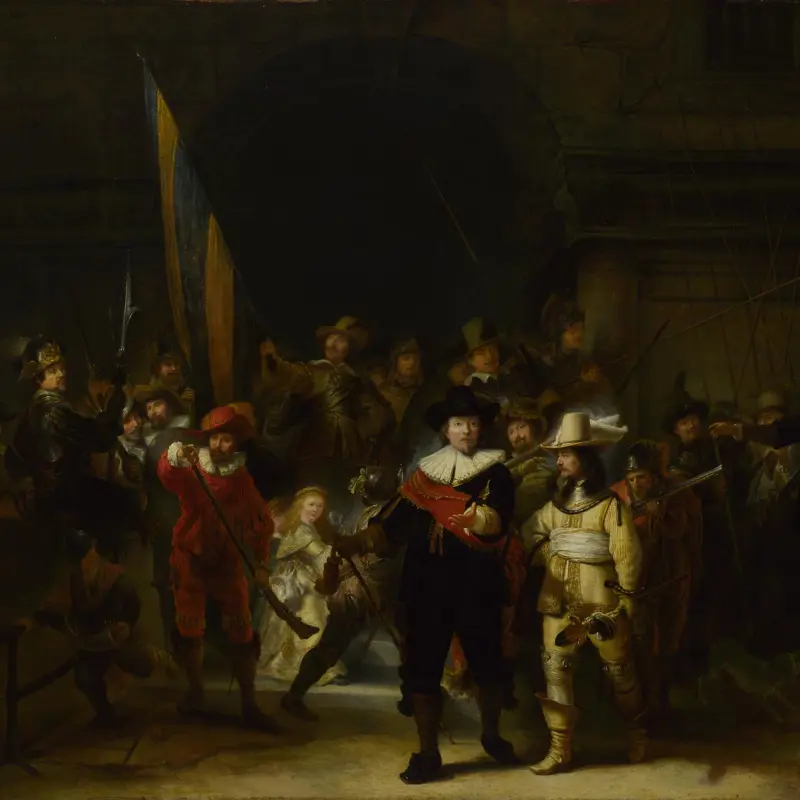Pupil of Rembrandt, 'The Adoration of the Shepherds', 1646
About the work
Overview
A burst of brilliant light shines on the newborn Christ, who is watched over by Mary, Joseph and a gathering of worshippers and onlookers. The source of the light is hidden, so it seems to radiate directly from the sleeping child, illuminating the faces of all around him.
The scene represents the episode in the Bible when shepherds arrived to pay homage to the Messiah. One kneels, raising his hands in wonder. Another is silhouetted against the light, while a third stands reverently to one side. Along with the animals in the background, this was the traditional cast of an Adoration of the Shepherds. But the artist added other figures, including the two women holding up a small child, to give the scene a more informal atmosphere.
A closely related version of the Adoration known to be by Rembrandt is in the Alte Pinakothek, Munich. Analysis suggests that it is likely that the London picture is a study inspired by the Munich one, made by a highly competent apprentice.
Key facts
Details
- Full title
- The Adoration of the Shepherds
- Artist
- Pupil of Rembrandt
- Artist dates
- 1606 - 1669
- Date made
- 1646
- Medium and support
- oil on canvas
- Dimensions
- 65.5 × 55 cm
- Inscription summary
- Signed; Dated
- Acquisition credit
- Bought, 1824
- Inventory number
- NG47
- Location
- Not on display
- Collection
- Main Collection
- Previous owners
Provenance
Additional information
Text extracted from the ‘Provenance’ section of the catalogue entry in Neil MacLaren, revised and expanded by Christopher Brown, ‘National Gallery Catalogues: The Dutch School: 1600–1900’, London 1991; for further information, see the full catalogue entry.
Exhibition history
-
2010Close Examination: Fakes, Mistakes and DiscoveriesThe National Gallery (London)30 June 2010 - 12 September 2010
-
2011Rembrandt: The Quest for ChiaroscuroThe National Museum of Western Art12 March 2011 - 12 June 2011Nagoya City Art Museum25 June 2011 - 4 September 2011
-
2014Strange Beauty: Masters of the German RenaissanceThe National Gallery (London)19 February 2014 - 11 May 2014
Bibliography
-
1823J. Young, A Catalogue of the Celebrated Collection of Pictures of the Late John Julius Angerstein, Esq: Containing a Finished Etching of Every Picture, and Accompanied with Historical and Biographical Notices, London 1823
-
1829
J. Smith, A Catalogue Raisonné of the Works of the Most Eminent Dutch, Flemish, and French Painters: In Which is Included a Short Biographical Notice of the Artists, with a Copious Description of Their Principal Pictures […], 9 vols, London 1829-1842
-
1897W. von Bode and C. Hofstede de Groot, The Complete Work of Rembrandt, 8 vols, Paris 1897
-
1907C. Hofstede de Groot, Catalogue Raisonné of the Works of the Most Eminent Dutch Painters of the Seventeenth Century, 10 vols, London 1907
-
1907C. Hofstede de Groot, Catalogue Raisonné of the Works of the Most Eminent Dutch Painters of the Seventeenth Century, 10 vols, London 1907
-
1909A. Rosenberg and W.R. Valentiner, Rembrandt: Des Meisters Gemalde mit einer biographischen Einleitung, Stuttgart 1909
-
1923A. Bredius, 'Christ Blessing the Children by Maes (?)', The Burlington Magazine, XLIII/246, 1923, pp. 104-5
-
1923W.R. Valentiner, 'Early Drawings by Nicolaes Maes', The Burlington Magazine, XLIII/244, 1923, pp. 16-22
-
1960Maclaren, Neil, National Gallery Catalogues: The Dutch School, 2 vols, London 1960
-
1985G. Schwartz, Rembrandt: His Life, His Paintings, Harmondsworth 1985
-
1988D. Bomford et al., Rembrandt (exh. cat. The National Gallery, 12 October 1988 - 17 January 1989), London 1988
-
1989J. Mills and R. White, 'Paint Media Analyses', National Gallery Technical Bulletin, XIII, 1989, pp. 69-71
-
1991Maclaren, Neil, revised by Christopher Brown, National Gallery Catalogues: The Dutch School, 1600-1900, 2nd edn (revised and expanded), 2 vols, London 1991
-
1992J.P. Filedt Kok, 'Bij een aanwinst. De tweede staat van Rembrandts ets. De Aanbidding der herders: Een nachtstuck', Bulletin van het Rijksmuseum, XL/2, 1992, pp. 161-71
-
1993C. Tümpel, Rembrandt: All Paintings in Colour, Antwerp 1993
-
1995E.H. Gombrich, Shadows: The Depiction of Cast Shadows in Western Art (exh. cat. The National Gallery, 26 April - 18 June 1995), London 1995
-
1996J. Edwards, Alexandre-Joseph Paillet: Expert et marchand de tableaux à la fin du XVIIIe siècle, Paris 1996
-
1998S. Rosenthal, B. Schwenk and A. Longhis, Die Nacht (exh. cat. Haus der Kunst, 1 November - 7 February 1999), Wabern-Bern 1998
-
2001
C. Baker and T. Henry, The National Gallery: Complete Illustrated Catalogue, London 2001
-
2006M.C. Plomp, 'Rembrandt and His Circle. Drawings and Prints. Pupils', Metropolitan Museum of Art Bulletin, LXIV/1, 2006, pp. 34-46
-
2006K. Bahre et al., Rembrandt: Genie auf der Suche (exh. cat. Rembrandtshuis, 1 April - 2 July 2006; Gemäldegalerie, Staatliche Museen zu Berlin, 4 August - 5 November 2006), Zwolle 2006
-
2006D. Bomford et al., Rembrandt, London 2006
-
2006E. van de Wetering, Rembrandt: Quest of a Genius (exh. cat. Rembrandtshuis, 1 April - 2 July 2006; Gemäldegalerie, Staatliche Museen zu Berlin, 4 August - 5 November 2006), Amsterdam 2006
-
2006E. van de Wetering, '"Principaelen" and Satellites: Pupils' Production in Rembrandt's Workshop', in L.B. Rønberg and E. de la Pedersen (eds), Rembrandt?: The Master and his Workshop, Copenhagen 2006, pp. 106-22
About this record
If you know more about this work or have spotted an error, please contact us. Please note that exhibition histories are listed from 2009 onwards. Bibliographies may not be complete; more comprehensive information is available in the National Gallery Library.

